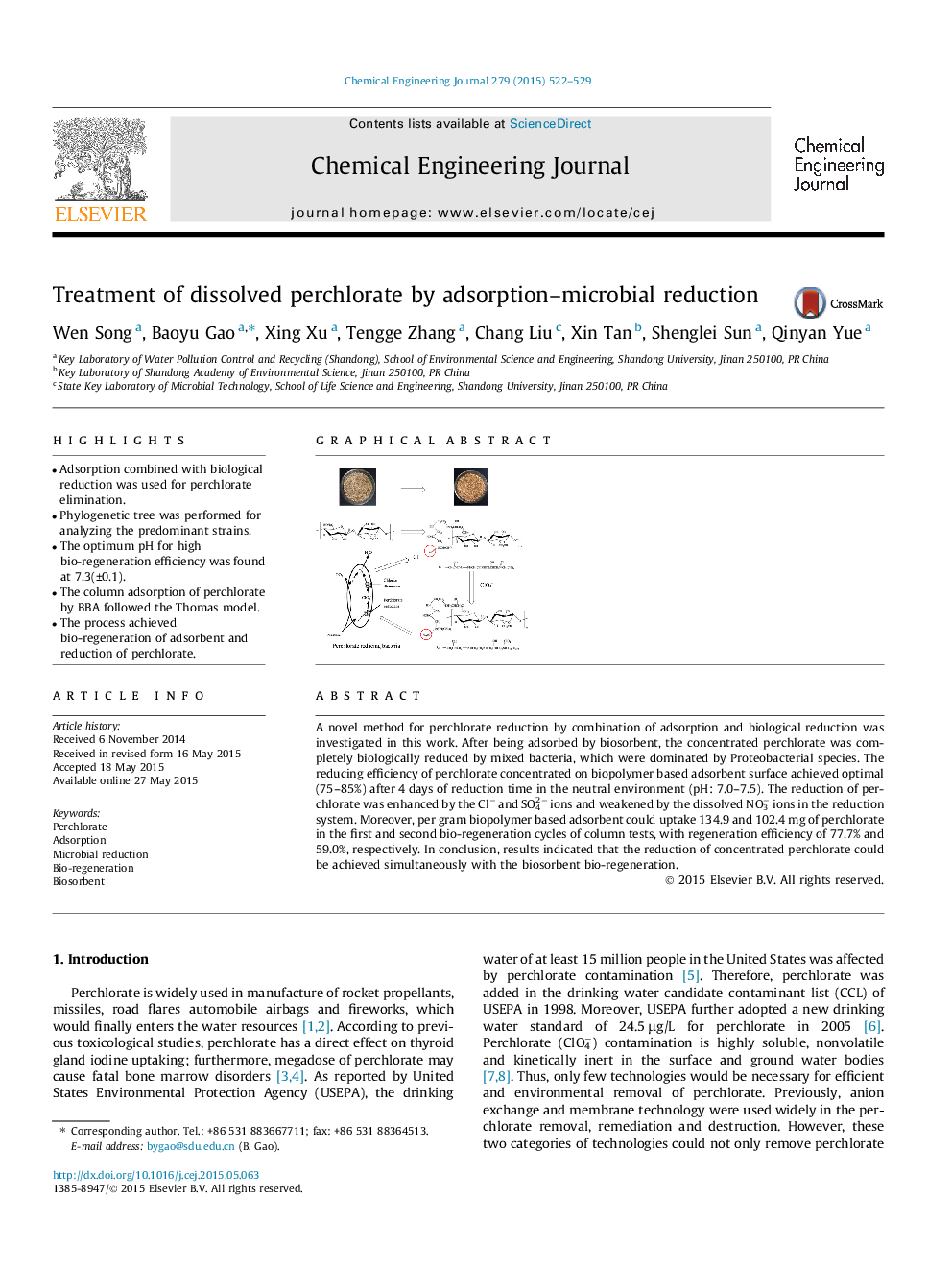| Article ID | Journal | Published Year | Pages | File Type |
|---|---|---|---|---|
| 146096 | Chemical Engineering Journal | 2015 | 8 Pages |
•Adsorption combined with biological reduction was used for perchlorate elimination.•Phylogenetic tree was performed for analyzing the predominant strains.•The optimum pH for high bio-regeneration efficiency was found at 7.3(±0.1).•The column adsorption of perchlorate by BBA followed the Thomas model.•The process achieved bio-regeneration of adsorbent and reduction of perchlorate.
A novel method for perchlorate reduction by combination of adsorption and biological reduction was investigated in this work. After being adsorbed by biosorbent, the concentrated perchlorate was completely biologically reduced by mixed bacteria, which were dominated by Proteobacterial species. The reducing efficiency of perchlorate concentrated on biopolymer based adsorbent surface achieved optimal (75–85%) after 4 days of reduction time in the neutral environment (pH: 7.0–7.5). The reduction of perchlorate was enhanced by the Cl− and SO42− ions and weakened by the dissolved NO3− ions in the reduction system. Moreover, per gram biopolymer based adsorbent could uptake 134.9 and 102.4 mg of perchlorate in the first and second bio-regeneration cycles of column tests, with regeneration efficiency of 77.7% and 59.0%, respectively. In conclusion, results indicated that the reduction of concentrated perchlorate could be achieved simultaneously with the biosorbent bio-regeneration.
Graphical abstractFigure optionsDownload full-size imageDownload as PowerPoint slide
